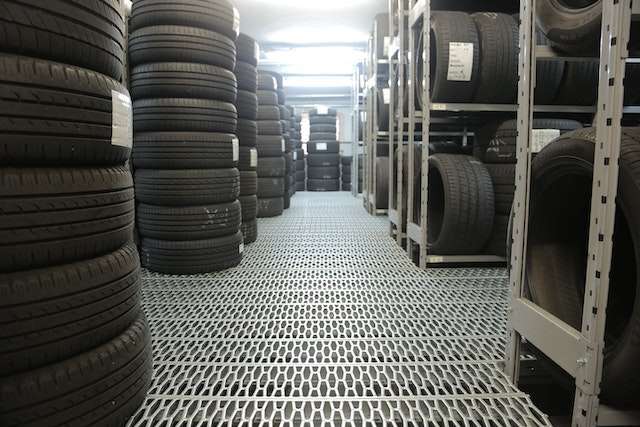
The performance of your vehicle’s tires is the most important aspect of maintaining safety while driving. No matter how good the tires are, there will come a point in time when they will start wearing out and lose their braking ability and traction. As a vehicle owner, it is very important to know when it is the right time for replacing your tires. Luckily we’ve prepared a list of 5 things to check before replacing your tires to be absolutely sure you’re doing the right thing.
- Irregular tread wear
If you notice irregular tread wear, you should bring your car immediately for maintenance. Irregular tread wear is often a sign of wheel misalignment, improper inflation pressure, the need for a tire rotation or a combination of the aforementioned reasons. Regardless of what caused it, irregular tread wear is a sign that you need to get your car in for repairs.
Have a competent tire workshop check the suspension of your vehicle if there is uneven tire wears or if the tires wear out faster than expected. Sometimes a minor correction eliminates the need of getting new tires altogether. Improper alignment or worn suspension parts can shorten a tire’s life by a lot. To avoid irregular tread wear, you can rotate your tires from front to rear in pairs.
- Checking for abnormal bulges or bubbles
The sidewall refers to the tire surface outside the rum that faces us when the car is parked. Any type of bulge may be an indication that the rigid internal frame of the tire has been cracked or damaged. As a result, this allows the air pressure to reach the flexible outer layers of the tire. Regardless of a tire’s tread status, any tires with a bulge in their sidewall should be replaced as soon as possible.
Abnormal bulges or bubbles in the sidewall might be caused by driving through a pothole, driving over a curb or driving with low tire pressure. It may be unsafe to drive with a sidewall bulge as it points to a compromise in the structural integrity of the tire. This increases the chances of a sudden blowout or failure when driving on the highway.
- Steering wheel vibration
You should balance your tires if you feel steering wheel vibration. It’s common to feel a vibration in the steering wheel when driving with unevenly worn tires. If your steering wheel starts vibrating when travelling at speeds of 65 to 80 km/h and the situation worsens as you increase your speed, it’s a sign that the tires are imbalanced. IF balancing the tires does not work, it is more than likely damaged and needs replacement.
You will probably need to replace your tires if you notice tire vibrations along with other signs such as irregular tire wear or abnormal bulges. If you notice that your tire has a scalloped or cupped appearance, it’s a sign that they aren’t being rotated enough.
- Dry rot
Seeing little cracks all over the tires is a sign that the rubber is breaking down. Tires with dry rot can fall apart, allowing them to separate from the steel belt. This may cause damage to the exterior of the car when travelling. It’s very common that wheels start rotting before the tread starts to diminish.
You should always inspect for dry rot before embarking on a longer trip. To prevent dry rot, you can de-grease your tires if they are exposed to a high degree of sunlight.
- Worn out ball joints
Worn-out ball joints are the primary cause of uneven tire wear and accelerated inner tire wear. Ball joints are responsible for linking a vehicle’s control arms to the steering knuckles with its ball and socket design. However, with time, the ball joints can get damaged by friction, causing the tire to wobble extremely. This can cause an unintended outward steering knuckle movement. A worn-out lower ball joint can affect the vehicle camber angle, leading to accelerated tire wear.
How should you select new tires for your vehicle?
When replacing your tires, you should look for tires that specifically promise comfort, low road noise and a smooth ride. Touring tires with lower speed ratings are optimised for more comfort instead or more speed. You should thus, never go below the speed rating mentioned by the manufacturer of the vehicle. Aggressive tread designs should be avoided at all costs, as they produce a lot of road noise.
Conclusion
Tires are the most important part of your vehicle and command your attention. They are the only point of contact to the road surface and decide the quality of your driving experience. Before bad tires can cause any more damage to the vehicle itself, it is always a wise idea to replace your tires.